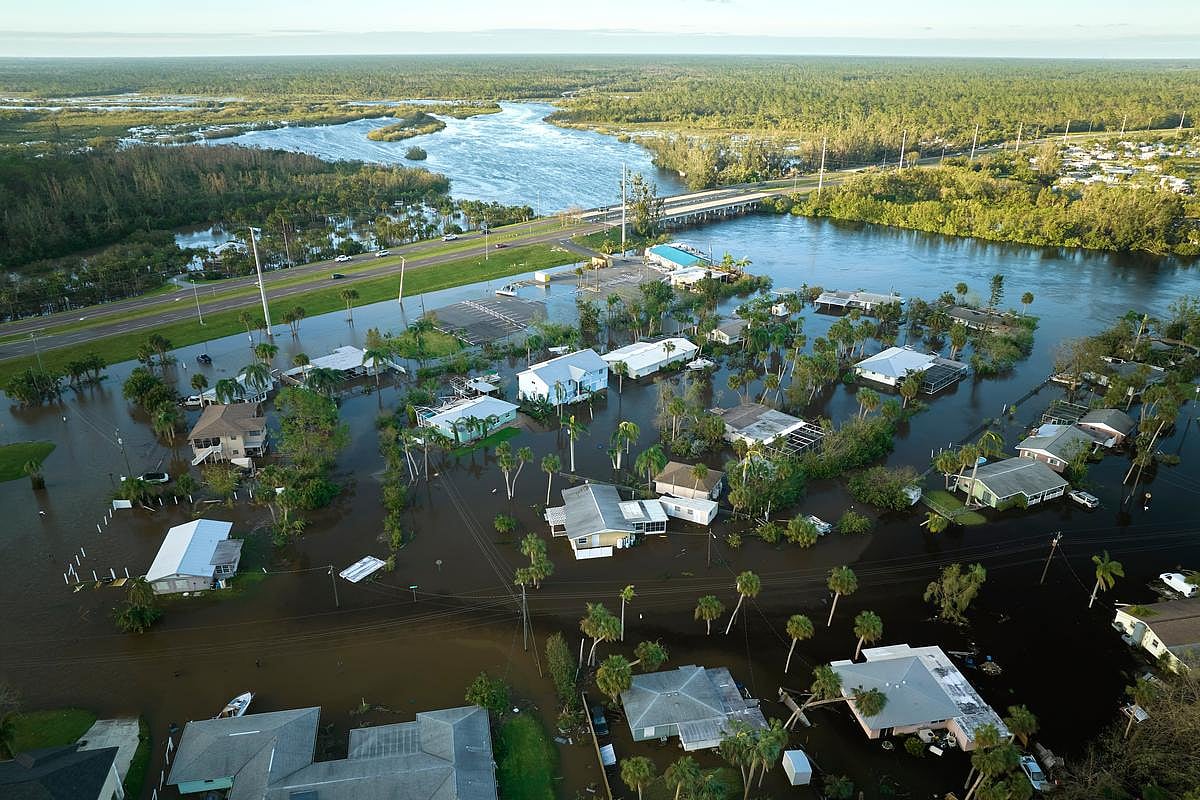Get Healthy!

- Ernie Mundell
- Posted October 2, 2024
Deadly Legacy of Storms Like Helene Can Linger for Over a Decade
As the southeastern United States begins to recover from Helene's devastation, a new study suggests the health impact of major storms can linger for over a decade.
So far, more than 120 people across six states have already been confirmed dead in Helene's aftermath, although that number could rise much higher as rescue efforts continue.
Now, a team from Stanford University reports the death toll over the much longer term could be in the thousands.
Even years later, “in any given month, people are dying earlier than they would have if the storm hadn’t hit their community,” explained senior study author Solomon Hsiang.
“A big storm will hit, and there’s all these cascades of effects where cities are rebuilding or households are displaced or social networks are broken. These cascades have serious consequences for public health," said Hsiang, professor of environmental social sciences at Stanford's Doerr School of Sustainability.
Overall, the researchers estimate that anywhere between 7,000 and 11,000 excess deaths can be attributed to the years-long aftermath of a major tropical storm or hurricane.
Adding up the damage, major storms have since 1930 contributed to the deaths of anywhere from 3.6 million and 5.2 million Americans, the team reported Oct. 2 in the journal Nature.
That exceeds the combined number of deaths from motor vehicle accidents, infectious diseases or battle deaths in wars during the same time period, Hsiang's team noted.
To come to their conclusions, the researchers looked at data on 501 tropical storms or hurricanes that hit the Atlantic and Gulf coasts from 1930 to 2015. They compared state death rates for various populations during periods before and after these disasters.
Prior work by Hsiang had found that big storms can put the brakes on a state's economic growth for at least 15 years.
“When we started out, we thought that we might see a delayed effect of tropical cyclones on mortality maybe for six months or a year, similar to heat waves,” said lead study author Rachel Young.
However, "the results show deaths due to hurricanes persist at much higher rates not only for months but years after floodwaters recede and public attention moves on," said Young. She's now a postdoctoral scholar at the University of California, Berkeley, but worked on the study while a master's student in Hsiang's prior lab there.
Why the long-term impact? The reasons are likely manifold, but the authors point out a few likely scenarios.
For example, people whose homes have been severely damaged by storms and floodwaters might exhaust financial resources in repairing the damage, leaving less money to pay for future health care.
Or storms may cause families to disperse, weakening social networks that bring the support that's often crucial to maintaining health.
Governments may also shift resources away from health care and towards recovery efforts.
Drilling down into the numbers, the new study estimates that economic and other pressures linked to storms could raise the death rate for infants, children and young adults over time.
They believe that a quarter of infant deaths and 15% of deaths to Americans under the age of 45 are related to the aftermath of tropical storms and hurricanes.
Why the impact on babies and children?
“These are infants born years after a tropical cyclone, so they couldn’t have even experienced the event themselves in utero,” Young said in a Stanford news release. “This points to a longer-term economic and maternal health story, where mothers might not have as many resources even years after a disaster than they would have in a world where they never experienced a tropical cyclone.”
The death toll isn't spread equally: Black Americans have triple the odds to die in the months and years after a hurricane compared to their white peers, the study found.
Fatalities linked to storms were higher in areas that hadn't already had a long history of such disasters.
That's probably because"nobody on the ground knew that they should be adapting for this and nobody in the medical community has planned a response,” Young said.
She said that's a lesson for the future, given the effects of climate change.
“With climate change, we expect that tropical cyclones are going to potentially become more hazardous, more damaging, and they’re going to change who they hit,” said Young.
Is there anything individuals living in storm-prone areas can do?
According to Young, “Some solutions might be as simple as communicating to families and governments that, a few years after you allocate money for recovery, maybe you want to think about additional savings for health care-related expenses, particularly for the elderly, communities of color, and mothers or expectant mothers."
More information
Find out more about storm recovery at FEMA.
SOURCE: Stanford University, news release, Oct. 2, 2024







